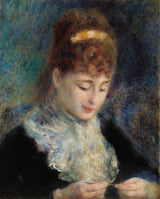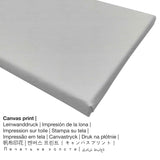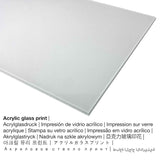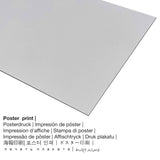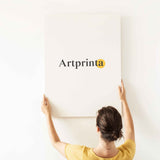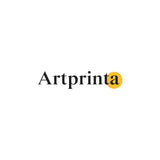Pierre-Auguste Renoir, 1877 - Mwanamke anayepiga Crocheting (Mwanamke wa Crocheting) - uchapishaji mzuri wa sanaa
Kodi ni pamoja. Usafirishaji umehesabiwa katika Checkout.
Mchoro "Woman Crocheting (Female Crocheting)"kutoka Pierre-Auguste Renoir kama nakala yako ya sanaa ya kibinafsi
Zaidi ya 140 year-old work of art "Woman Crocheting (Female Crocheting)" was painted by Pierre-Auguste Renoir in 1877. Mchoro wa miaka 140 ulichorwa kwa ukubwa: Kwa jumla: 16 1/8 x 12 13/16 in (cm 41 x 32,5). Mafuta kwenye turubai was applied by the European artist as the medium of the work of art. Today, the artpiece belongs to the art collection of Msingi wa Barnes, ambayo ni nyumbani kwa mojawapo ya mikusanyo mikubwa zaidi duniani ya michoro ya watu wanaovutia, baada ya hisia na picha za mapema za kisasa. Kwa hisani ya - Kwa hisani ya Wakfu wa Barnes, Merion na Philadelphia, Pennsylvania (yenye leseni - kikoa cha umma).Kwa kuongeza, mchoro huo una nambari ya mkopo:. Kwa kuongeza hii, usawa uko ndani picha ya format with a ratio of 1 : 1.2, meaning that the length is 20% shorter than the width. The illustrator, painter, sculptor Pierre-Auguste Renoir was an artist from France, whose artistic style can be attributed primarily to Impressionism. The European painter was born in the year 1841 in Limoges, Nouvelle-Aquitaine, France and deceased at the age of 78 katika mwaka 1919.
Maelezo ya ziada ya mchoro kutoka kwenye jumba la makumbusho (© Hakimiliki - na Barnes Foundation - www.barnesfoundation.org)
During the 1870s, alongside his ambitious modern life subjects such as Leaving the Conservatory (BF862), Renoir painted very many canvases of single figures; some of these were portraits, but many were more generic, showing unidentified figures, generally bust length, focusing on their everyday activities. Woman Crocheting is one of the most elaborated and highly finished of these canvases; despite its small scale, its treatment and signature show that Renoir intended it for sale, and it seems likely that the composer Emmanuel Chabrier, who also owned Leaving the Conservatory, acquired it soon after its execution, though we do not know when.In some of these single-figure paintings, the model is depicted informally dressed or revealingly posed in her undergarments, as in A Girl Crocheting of circa 1875. Here, by contrast, there is no such sensual appeal; the figure is fully and fashionably dressed, with an elaborate lace scarf, as she focuses on her crocheting. Her hair is held in place by a gold-colored hairband, and her lowered eyes deny the viewer any imaginative access toter expression. Indeed, of all Renoir's paintings of a single female figure, this is one of those that makes the least direct appeal to the viewer, in either empathetic or voyeuristic terms.Her facial features are treated with considerable delicacy but wholly without conventional draftsmanship. The lit side of her face is differentiated from the background by contrasts of color and tone, but its contours are soft, and the shadowed side of her head is gently blurred into the wall behind her. Alongside the pink of her face and hands and the red of her lips, her golden hairband and especially her light scarf act as focal points, set off against the darker hues of the rest of the picture. The ruff is handled with great freedom, in an array of variegated and seemingly spontaneous touches that hint at its form and fabric but wholly without descriptive detail. We cannot be certain, too, about the ruff's actual, local color; its highlights are white and pale cream, but much soft blue is used to suggest the fall of its material and the shadows in it. We are likewise left uncertain about the color of the model's hair, which is treated with varied strokes of red and blue and, on its lit side, soft yellows.The background does not merely act as a foil to the figure. It is delicately brushed, in fine strokes predominantly of blue and green with some soft yellow accents. However, despite the finesse of its execution, it is unclear what it represents. The more emphatic strokes to the lower right of the figure may suggest a sofa on which she is seated, but the area behind her head might be read as a wall covering or as some sort of foliage.
Data ya kazi ya sanaa iliyopangwa
| Jina la kazi ya sanaa: | "Woman Crocheting (Female Crocheting)" |
| Uainishaji wa kazi ya sanaa: | uchoraji |
| Aina pana: | sanaa ya kisasa |
| Karne: | 19th karne |
| mwaka: | 1877 |
| Umri wa kazi ya sanaa: | 140 umri wa miaka |
| Njia asili ya kazi ya sanaa: | mafuta kwenye turubai |
| Vipimo vya mchoro asilia: | Kwa jumla: 16 1/8 x 12 13/16 in (cm 41 x 32,5) |
| Makumbusho / eneo: | Msingi wa Barnes |
| Mahali pa makumbusho: | Philadelphia, Pennsylvania, Marekani |
| Ukurasa wa wavuti wa Makumbusho: | www.barnesfoundation.org |
| Aina ya leseni: | Uwanja wa umma |
| Kwa hisani ya: | Kwa hisani ya Wakfu wa Barnes, Merion na Philadelphia, Pennsylvania |
Maelezo ya jumla kuhusu msanii
| jina: | Pierre-Auguste Renoir |
| Majina Mbadala: | Auguste Renoir, renoir p.a., p.a. renoir, Renoar Pjer-Ogist, Pierre Auguste Renoir, Renoir, firmin auguste renoir, רנואר אוגוסט, Renuar Ogi︠u︡st, Pierre-Auguste Renoir, Renoir Auguste, Renoir August, Renoir Pierre Auguste, renoir a., Renoir Pierre August, רנואר פייר אוגוסט, August Renoir, a. renoir, pierre august renoir, Renoir Pierre-Auguste |
| Jinsia ya msanii: | kiume |
| Raia: | Kifaransa |
| Kazi: | mchongaji, mchoraji, mchoraji |
| Nchi: | Ufaransa |
| Kategoria ya msanii: | msanii wa kisasa |
| Mitindo ya msanii: | Ishara |
| Uhai: | miaka 78 |
| Mwaka wa kuzaliwa: | 1841 |
| Kuzaliwa katika (mahali): | Limoges, Nouvelle-Aquitaine, Ufaransa |
| Alikufa: | 1919 |
| Alikufa katika (mahali): | Cagnes-sur-Mer, Provence-Alpes-Cote d'Azur, Ufaransa |
Je, ni nyenzo gani za uchapishaji wa sanaa ninazoweza kuchagua?
Tunatoa anuwai ya saizi na vifaa anuwai kwa kila bidhaa. Kwa hivyo, tunakuruhusu kuchagua kati ya chaguzi zifuatazo:
- Chapisho la bango (nyenzo za turubai): The poster is a UV printed sheet of flat canvas paper with a slight surface structure, which reminds the actual work of art. Please note, that depending on the absolute size of the poster print we add a white margin of approximately 2-6cm round about the artwork in order to facilitate the framing with a custom frame.
- Metali (chapisho la dibond ya aluminium): This is a metal print manufactured on aluminium dibond with an outstanding depth effect, which makes a fashionable impression thanks to a non-reflective surface structure. The bright and white parts of the original artpiece shimmer with a silky gloss, however without glare. Colors are bright and luminous, the fine details of the print appear very clear, and there’s a matte look that you can literally feel.
- Uchapishaji wa glasi ya akriliki (iliyo na mipako halisi ya glasi): A glossy print on acrylic glass, which is often referred to as a plexiglass print, will transform your favorite original work of art into beautiful wall decoration and offers a viable alternative option to canvas or aluminium dibond art prints. The artwork is manufactured with the help of state-of-the-art UV printing machines. This creates intense and sharp print colors. The major benefit of an acrylic glass print is that contrasts and also color details become more identifiable with the help of the precise tonal gradation of the picture.
- Turubai: A canvas direct print is a printed cotton canvas mounted on a wood stretcher. The great advantage of canvas prints is that they are relatively low in weight, which means that it is easy to hang up your Canvas print without any wall-mounts. That is why, canvas prints are suited for all kinds of walls.
Maelezo ya makala yaliyoundwa
| Uainishaji wa makala: | uchapishaji wa sanaa |
| Mbinu ya uzazi: | uzazi wa kidijitali |
| Mbinu ya utengenezaji: | Uchapishaji wa moja kwa moja wa UV |
| Asili ya bidhaa: | zinazozalishwa nchini Ujerumani |
| Aina ya hisa: | uzalishaji kwa mahitaji |
| Bidhaa matumizi: | mapambo ya ukuta, muundo wa nyumba |
| Mpangilio wa kazi ya sanaa: | mpangilio wa picha |
| Uwiano wa picha: | urefu hadi upana 1: 1.2 |
| Maana ya uwiano wa picha: | urefu ni 20% mfupi kuliko upana |
| Lahaja za nyenzo: | chapa ya glasi ya akriliki (yenye mipako halisi ya glasi), chapa ya bango (karatasi ya turubai), chapa ya turubai, chapa ya chuma (dibond ya alumini) |
| Chaguzi za ukubwa wa turubai kwenye fremu ya machela (kuchapishwa kwa turubai): | 50x60cm - 20x24", 100x120cm - 39x47", 150x180cm - 59x71" |
| Chaguzi za ukubwa wa glasi ya akriliki (na mipako halisi ya glasi): | 50x60cm - 20x24", 100x120cm - 39x47", 150x180cm - 59x71" |
| Chaguzi za kuchapisha bango (karatasi ya turubai): | 50x60cm - 20x24", 100x120cm - 39x47" |
| Alumini za kuchapisha (nyenzo za dibond ya alumini) lahaja za ukubwa: | 50x60cm - 20x24", 100x120cm - 39x47" |
| Frame: | hakuna sura |
Taarifa muhimu: We try everything to describe our art products as precisely as possible and to illustrate them visually. At the same time, the colors of the print materials, as well as the printing can diverge somehwat from the image on the monitor. Depending on your screen settings and the quality of the surface, not all colors are printed as exactly as the digital version on this website. Considering that all the fine art prints are processed and printed by hand, there may also be slight variations in the motif's size and exact position.
Maandishi haya ni miliki na yamelindwa na hakimiliki © - Artprinta (www.artprinta.com)

